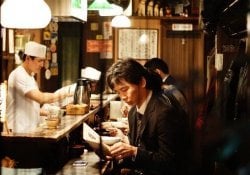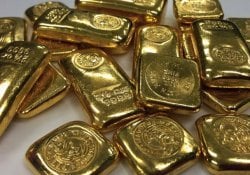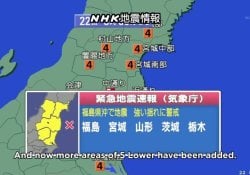Japan is a country that highly values tea. The country produces hundreds of unique tea varieties and qualities based on every imaginable factor. In this article, we are going to see more than 50 types of Japanese teas and their benefits.
You will see tea that has been grown in the shade, tea that has been steamed, dried in the sun, tea made from buds, leaves, sticks or stems, tea rolled into ball shapes, rice tea, seaweed, tea that is harvested on a special date and many others.
Tea flavors change depending on when it is harvested and how it is produced, so many types of tea described in this article are just variations.
Índice de Conteúdo
The tea culture in Japan
The culture of Japanese tea flourished for a period of around 1200 years. The tasting of matcha was introduced in the late 12th century by the monk Eisai. At that time, tea was a precious drink that was also used for medicinal purposes.
Tea is an exciting aspect of Japanese culture. For example, the Japanese Tea Ceremony transforms the preparation and consumption of tea into an art. The tea tree is believed to have been brought to Japan from China around the year 805.
Shizuoka Prefecture has the largest tea production in Japan. Kagoshima Prefecture is second, Mie Prefecture is third, and Miyazaki Prefecture is fourth. In the past, tea was considered a luxury item, used in temples and by important people.
In any corner of Japan you can find some kind of tea. Whether in vending machines, convenience stores or restaurants, tea is everywhere. At the end of the article we will talk a little about Modern Tea.
Did you know? Is the color brown in Japanese spelled Chairo [茶色]?
Types of Green Tea
The word tea is mainly derived from the Indian Tea plant, known as "Camellia Sinesis" or in Japanese "Chanoki" the main tea plant. The Japanese word for tea is spelled [茶] and inherits the reading "Cha", sometimes spelled "Ocha" [お茶].
(tea tree) is an evergreen tree that grows mainly in tropical and subtropical climates. Tea trees are propagated from seeds or shoots. It takes about 4 to 12 years for a tea tree to set seed, and about 3 years for a new tree to be suitable for harvest.
That is, Indian tea or “Camellia Sinesis” is the main component of traditional green tea or derivatives. Below we will look at different types of green tea and how they are made. Realize that tea can change its flavor and color according to its preparation.
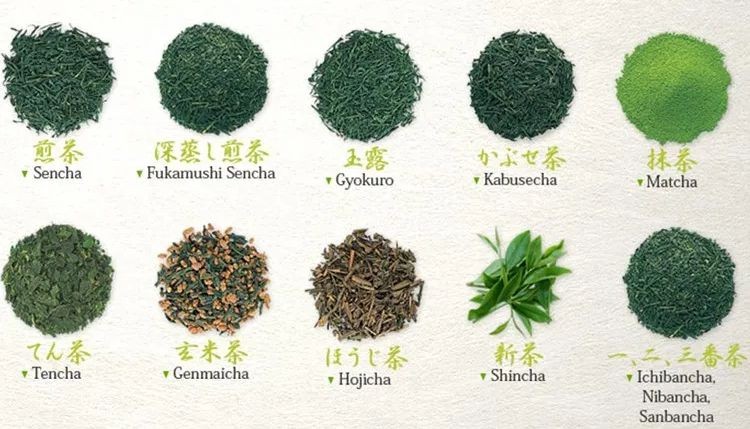
Ryokucha - Green Tea
Ryokucha [緑茶] is a generic term for green tea. Most Japanese teas are variations of Ryokucha. In Japan, green tea is often called simply Ocha (tea) or Nihoncha (Japanese tea). It is much stronger than the green tea we know in Brazil.
Matcha - Green Tea Powder
Matcha [抹茶] - Matcha Refers to powdered or ground green tea, it is often used in tea ceremonies and also to flavor and color sweets and some foods such as wagashi.
Genmaicha - Green tea with roasted rice
[玄米茶] is a green tea combined with roasted rice. Historically the cheapest variety of tea. Rice was essentially to fill tea for those who could not afford plain tea. Today it is appreciated for its unique flavor and roasted aroma. It often contains matcha.
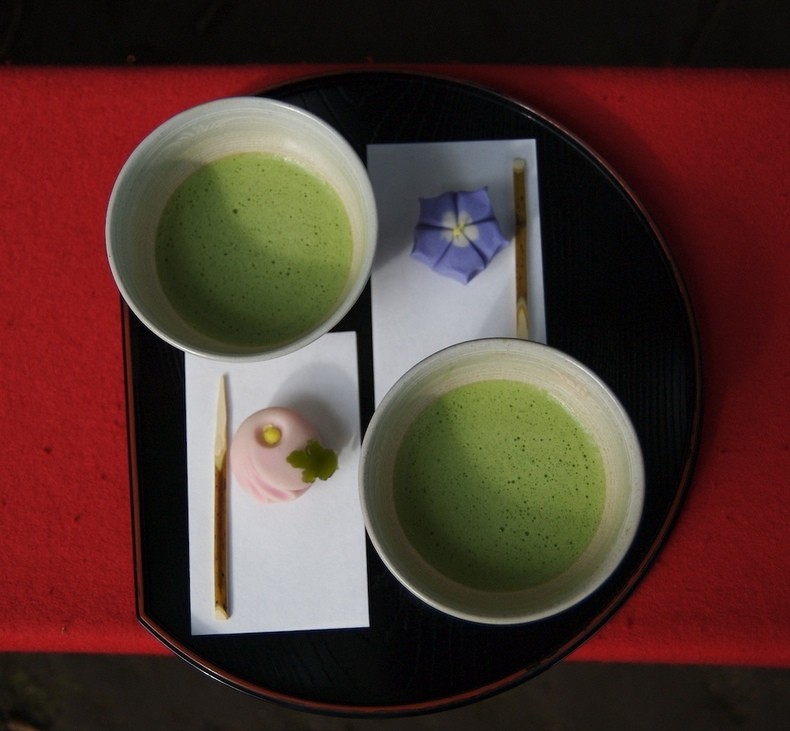
Sencha - Common green tea
Sencha [煎茶] - Sencha ] – Its name means “common tea” and is essential in almost every Japanese home. Sencha tea has a pleasant flavor and aroma, as all Japanese green tea leaves are steamed to preserve their natural flavor.
Kamairicha - Iron Pot Tea
Kamairicha [釜炒り茶] – While most Japanese teas are steamed, Kamairicha is made in a hot iron pot of up to 300ºC, making it taste less bitter and slightly roasted.
Bancha - Cheap Tea
Bancha [番茶] - A green tea made with leaves from the end of the season, larger and tougher. It is mild and slightly bitter, a type of cheap tea usually served in Japanese restaurants. Refers to non-standard, low-quality tea.
Read also: 15 Types of Japanese Restaurants and Dishes
Gyokuro - High Quality Tea
Gyokuro [玉露] - An expensive tea that grew in the shadows for 20 days. Gyokuro has a sweet taste. It has a lot of caffeine and is not bitter. Known for its green color and mild flavor, its cultivation makes it a premium tea.
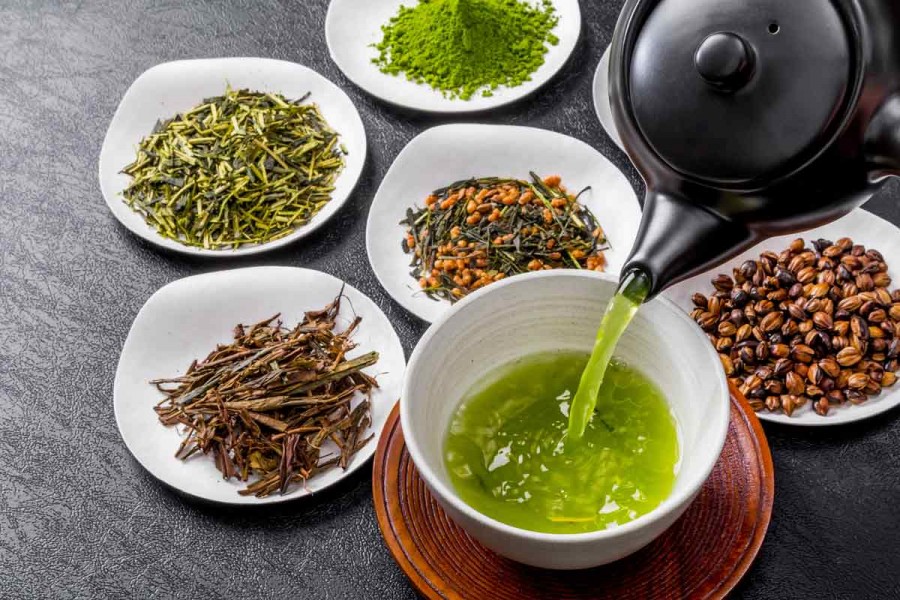
Other types of green tea
Tamaryokucha [玉緑茶] – A Kyushu tea known for its curled leaves. Tamaryokucha has a spicy flavor and a citrus aroma.
Hojicha [保持茶] – Sencha roasted at 200 degrees and cooled immediately. Caffeine undergoes sublimation and the taste becomes less bitter.
Hachijuhachiya Sencha [八十八夜煎茶] - Sencha harvested 88 days after spring starts.
Fukamushicha [深蒸し茶] - Steamed green tea;
Fukamushi Sencha [深蒸し煎茶]- This type of tea goes through a longer cooking process. The color is dark, its leaves crumble and the flavor is much stronger and bitter.
Guricha [ぐり茶] – Japanese green tea similar to gunpowder green tea, as it has a berry-like spiciness; Also known as or Tamaryokucha [玉緑茶];
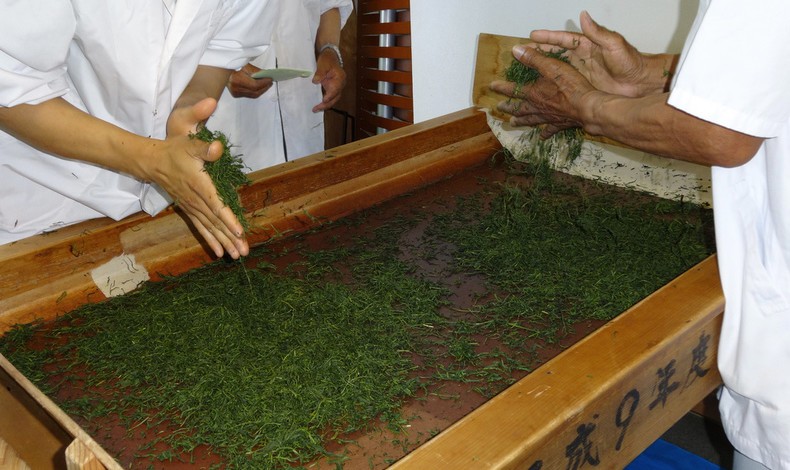
Mugicha - Barley tea
Mugicha [麦茶] is a drink made by boiling roasted barley seeds with their husks in hot water and then peeling or leaching them with water. Also known as Mugiyu. It has no caffeine and its taste is milder.
Mugicha is one of the most popular teas after green tea. It is usually served chilled, but can be enjoyed hot. It is served free of charge mainly in restaurants and small establishments in Japan.
In Japan, the sight of drinking iced barley tea in the summer is a tradition. That's because the barley harvest is at the beginning of summer, tea is also tasty. It can also be found sold in bottles at convenience stores and beverage vending machines.
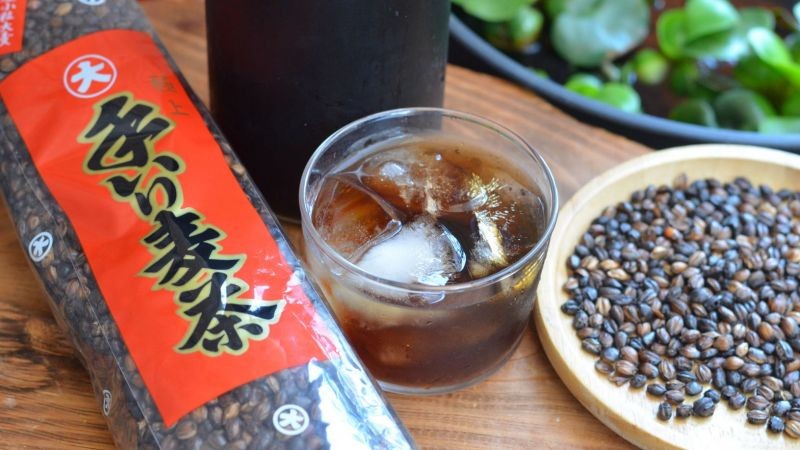
The article is still halfway through, but we recommend also reading:
Oolongcha - The Chinese Tea
Oolong tea, despite being Chinese, is quite popular in Japan. In this tea, darker oxidized leaves are used, which are later subjected to heat to interrupt the oxidation process.
Brown in color, this tea can be served hot or cold and its taste is slightly bitter. Oolongcha comes in many different flavors and varieties, and can be sweet and fruity or thick and woody.
Kocha - Chá Preto
Ko-Cha [古茶] – This is a tea that has been kept for a long time. The tea is produced in the previous year, it is very similar to the black tea found in the West, with a more bitter taste and brown color.
The Japanese word Kocha can also be used to refer to Western-style black tea. Japan has a rich Western-style tea culture and produces a wide variety of unique Kocha products that can be found in Hanbaiki.
Read also: Vending machines – Automatic vending machines
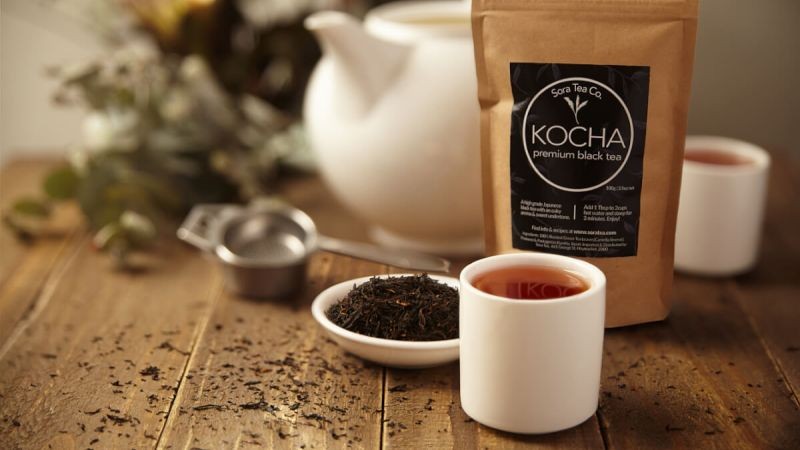
Amacha - Sweet Tea
Amacha [甘茶] is a sweet tea made from steamed, crushed and dried young leaves. This traditional tea is often poured over Buddhist statues in the flower ritual. That's because eight great dragon kings poured sweet dew into the hot water to celebrate Shaka's birth.
Your color is brown and yellowish, the tea made from Kanbutsukai also has the effect of repelling insects. Some are mixed with ink, the custom of putting it on the head to repel insects has been practiced throughout the country.
Sweet tea contains phyrosultin and isophyllozlutin as sweetening ingredients and its sweetness is 400 to 800 times that of sucrose and about twice that of saccharin. The sweetness comes out with the drying of the leaves.
As a raw drug, it has an antiallergic effect and an effect on periodontal disease. The tea is made from the Amachazuru plant, a sweet vine, it cannot be consumed too much due to its sweetness, it can cause vomiting, intoxication and even death.
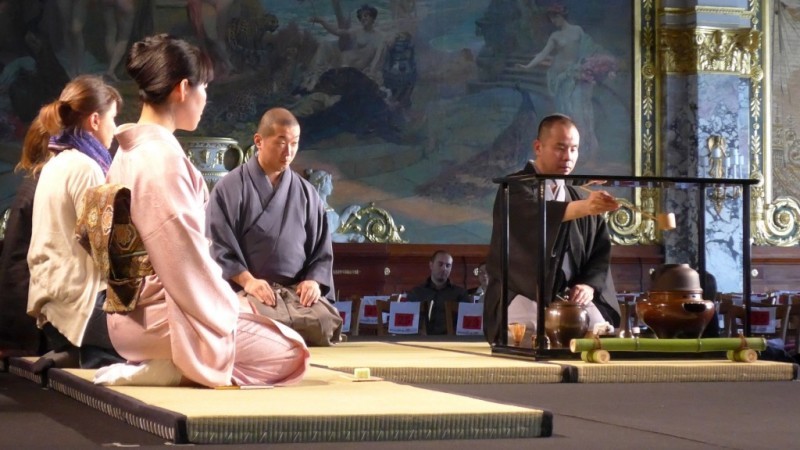
Sobacha - Soba tea
Sobacha [そば茶] is a tea made from roasted buckwheat seeds. It has a unique flavor, peculiar to buckwheat. There is also a variation that uses the noodles itself as raw material or a special type called Datan soba.
Read also: 15 types of Japanese noodles
In recent years, tea-based drinks made from Dattan Soba have been launched in PET bottles by major beverage manufacturers. Wheat is usually grown in the mountains at an altitude of over 1500 meters.
Tea has a natural wafer aroma and has many useful vitamins and minerals. Restores lost strength, helps burn fat, removes excess fluid from the body, controls blood sugar and removes toxins from the body.

Tencha - The Ancient Tea
It is believed to be one of the first types of teas introduced in ancient times from Japan. Tencha [甜茶] is a general term for sweet tea made from leaves that differ from botanical tea and Chinese tea. One of the ancient medicinal teas.
It can usually refer to Tiancha, sweet tea and blackberry leaf tea. There is also an eponymous Tencha [碾茶] a Japanese shaded green tea that is primarily used to make matcha, but is sometimes also used for cooking.
This means that the tea leaves are shaded for about three weeks. That's the reason matcha has such a vivid green color. After harvesting, the leaves are briefly steamed and dried.
Other types of Japanese teas
It is not possible to write in detail about all the teas available in Japan. Below we will briefly see some other Japanese teas:
- Nihoncha [日本茶] - Japanese tea;
- Kuuteicha [苦丁茶] – Twisted leaf tea;
- Konbucha [昆布茶] – Made with dried, chopped and powdered konbu;
- Yuzocha [ユズ茶] – Yuzu tea (type of lemon);
- Matecha [マテ茶] – Mate tea, popular in South America;
- Kobucha [昆布茶] - Seaweed tea;
- Umekobucha [梅昆布茶] Plum tea;
- Shougacha [しょうが茶] – Ginger Tea;
- Oobukucha [大服茶] – Tea prepared for the New Year with the first water of the year;
We recommend reading: Oshougatsu – New Year in Japan
Konacha
Konacha [粉茶] is a type of tea usually served in sushi restaurants. Despite being made from small leaves and having a very affordable price, the tea is very strong and has a strong flavor, one of the reasons sushi restaurants choose it.
Read also: Sushi Restaurants in Japan – How to eat?
Kukicha
Kukicha茎茶também é conhecido como Bocha [棒茶], ele é feito a partir de caules, talos e ramos. Kukicha tem um doce, com gosto de noz, e é levemente cremoso. Also known as Bocha [棒茶], it is made from stems, stalks, and twigs. Kukicha has a sweet, nutty flavor, and is slightly creamy.
Sakura tea
Sakura flowers are one of the great passions in Japan. They bloom in spectacular colors only to fall off in a few days. There are also tea made from Sakura flowers along with green tea and it brings a unique flavor and aroma.
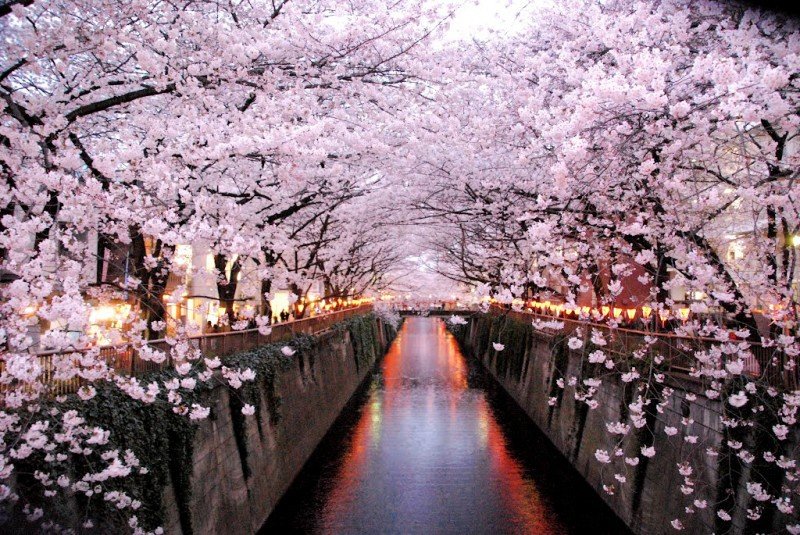
Habucha
Habucha [ハブ茶] - It may refer to teas made from Ebisugusa and Habusou. Also known as Senna Tea, a popular herbal remedy often marketed as a laxative, weight loss aid and detoxification method.
torch
Tochuu or Eucommia ulmoides is a tree native to China. Its Tochuucha tea [杜仲茶] is highly valued in traditional Chinese medicine, it enriches the body with natural calcium, potassium, zinc and iron. Considered beneficial for weight loss and in cases of hypertension.
mushroom tea
We are not specifically talking about magic mushroom teas for ceremonial or recreational purposes. A very popular mushroom tea in Japan is Shiitake Tea [椎茸茶] – Shitake is the Japanese mushroom rich in fiber and protein.
Inorganic Tea
Tea is also present even in Onsen, or hot springs. The minerals and benefits of a tea can be passed through the bath, several bathrooms in Japan have some water made hot with some kind of leaf.
bamboo tea
Takecha [竹茶] or bamboo tea has the highest concentration of Silica in the entire plant kingdom, one of the most important minerals in the human body, acting in the construction of bones, hair and nails, it is also rich in proteins, fibers and flavonoids.
Bamboo extract is a powerful antioxidant, antimicrobial, with anti-halitosis effect and soothing power. Bamboo leaf is used for skin, nails, teeth, and hair, serving as a renewer that acts from the inside out.
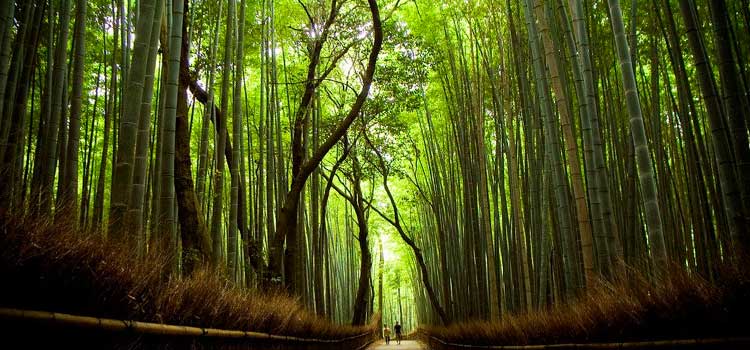
Hatomugi tea
Hatomugicha [ハトムギ茶] gets its name from the seeds that look like pigeons. This tea improves digestive function, metabolism and helps in the creation of new cells. It fights warts, reduces swelling, has a detoxifying effect, improves blood and eliminates skin blemishes.
insect dung tea
Chufuncha Insect Dung Tea [虫糞茶] is a Chinese tea made by drying the dung of leaf-eating moth larvae such as Konashi and Indian tea. There are different types depending on the type of plant and moth used.
Regional Japanese Teas
- Yamecha – Tea from the Yame region of Fukuoka known for its quality;
- Ujicha – Another regional variety from the Uji area of Kyoto. Tea has been produced in Uji for over 400 years;
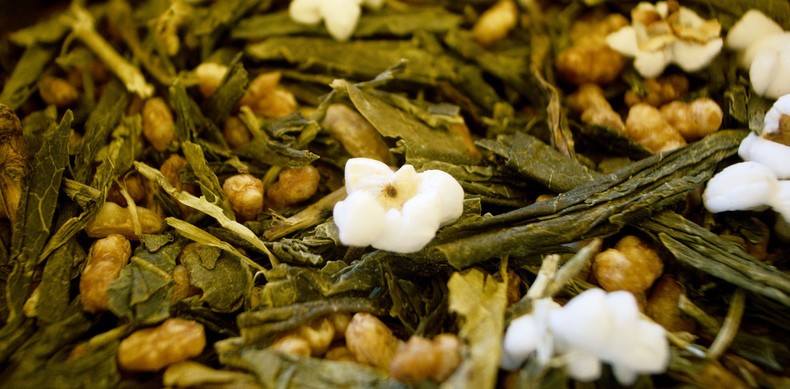
Teas Mixed with Other Ingredients
There are teas that have a large part of their composition other ingredients, but that may still contain a little tea from Camellia Sinesis. It may not necessarily be green tea, but it still has the Indian tea plant.
Sanpincha - Jasmine tea
Jasmine tea [ジャスミン茶] is and Sanpincha [さんぴん茶] are quite popular in Okinawa. This is tea made from jasmine flowers mixed with green or oolong tea. There are slight differences in the preparation and composition of Jasmine Tea with Sanpincha.
Bukubukucha [ぶくぶく茶 ] - bubbly tea In Okinawa they usually decoke fried rice, mix it in the sanpincha, beat it and sprinkle it with peanut powder.
Hanacha - Flower Tea
This is a category of tea, where they are made with aromas of flowers. Jasmine tea falls into this category. We have chrysanthemum and lotus tea. There are 3 ways to make Hanacha, extracting the perfume, using dried petals, or adding them to the tea after it is made.
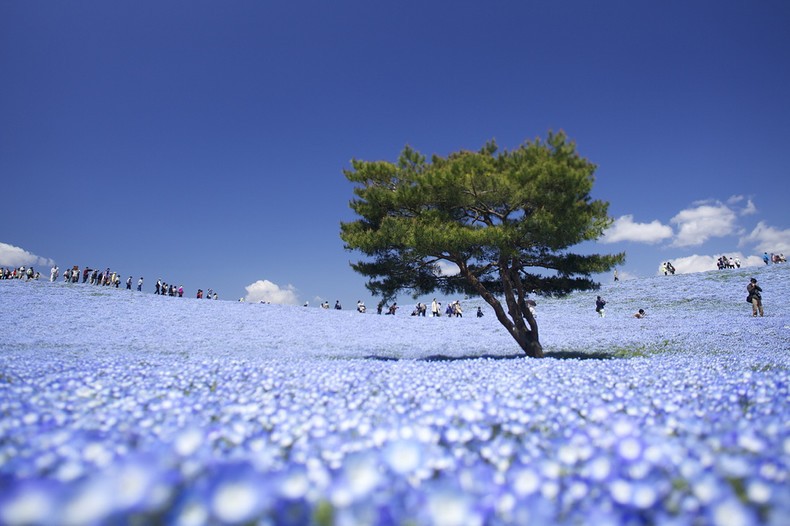
tea with milk
Some usually mix tea with milk, see below some of the recipes and their respective names in Japanese:
- Mirukuchii [ミルクティー] – Tea with milk, just add milk and sugar to the tea.
- Cha-yen [チャーイェン ] – Tea with condensed milk, popular in Thailand.
- Masala Chai – In addition to milk, it contains spices such as cardamom and cloves. Popular in India and Southeast Asian countries.
eating tea leaves
Shokucha [食茶] - Untranslatable The act of eating tea leaves or adding it as an ingredient in meals. Tea is also present in Japanese cuisine in dishes such as Chazuke, Porridge, Chasoba, Tea Egg, Lapeso, Tea Dumplings and Tsampa.
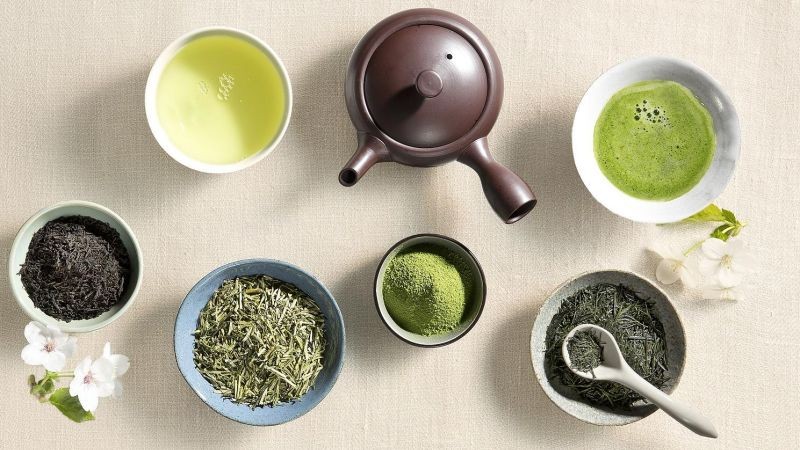
Other tea blends
Dataacha [バター茶] - Dataacha [バター茶] - Uma mistura de chá com manteiga;
Kajitsucha [果実茶] – Fruit tea, usually a mixture of lemon or apple in traditional tea.
Enoucha [鴛鴦茶] - Untranslatable A mixture of tea and coffee.
Reicha [擂茶]:- Traditional tea from a guest house, with peanuts, sesame seeds and brown rice.
Hachihocha [八宝茶] - Hachihocha A traditional tea from the tribe (ethnic group of China), with sugar and nuts.
Sandocha [三道茶] - A traditional Pei tea that contains sugar and lushan.
the tea ceremony
The Japanese tea ceremony is a traditional activity with influences from Taoism and Zen Buddhism, in which green tea is ceremonially prepared and served to guests in an atmosphere of simplicity and goodwill, surrounded by peace, harmony, respect and purity.
Matcha tasting was introduced at the end of the 12th century by the monk Eisai. At that time, tea was a precious beverage that was also used for medicinal purposes. The tea ceremony is known by the name of chanoyu [茶の湯].
Performing the tea ceremony correctly is quite difficult. The tea ceremony practitioner needs to have knowledge of traditional arts, architecture, landscape gardening and floral arts.
If you want to know more, also read: Chanoyu – Japanese tea ceremony
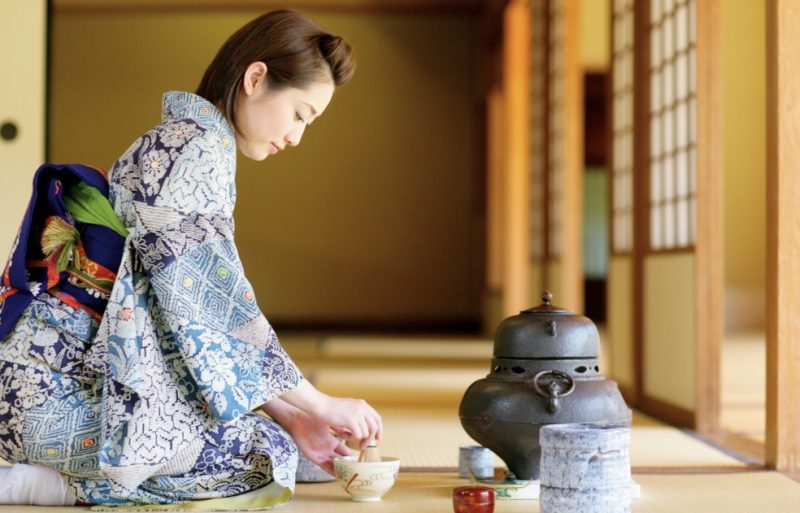
Where to buy Japanese Tea?
In Brazil you can buy these teas over the internet. To help, let's leave some teas that you can find in the great store Amazon Brazil. Unfortunately we don't have many, but you can find them on other sites.
The modern tea culture
Japanese tea is always changing. Today, most Japanese tea is consumed in PET bottles. Just walk into any supermarket or Konbini and you'll quickly notice that tea products dominate the beverage shelves.
Read also: Konbini - Convenience stores in Japan
Most are pure tea (no sugar or artificial ingredients). The Japanese retail industry is ultra competitive. Japanese tea products must continually change to compete for shelf space in convenience stores. New blends and infusions are usually released every month. Japan is a big tea lover.
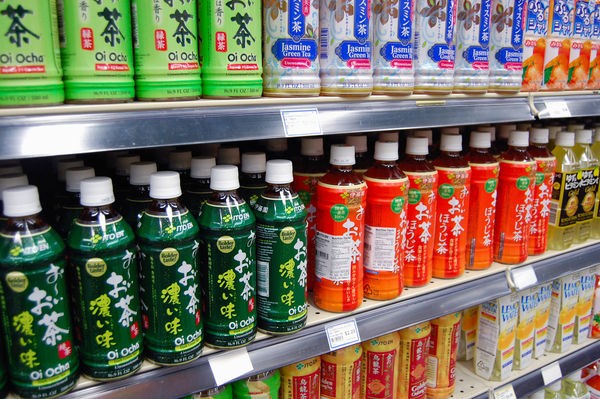
Below we will see a video of Santana making the famous Matcha Latte!
Photograph: Roberto Maxwell

